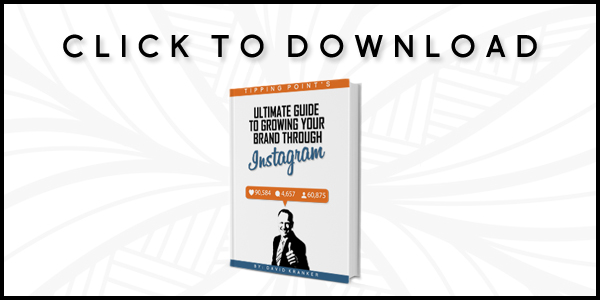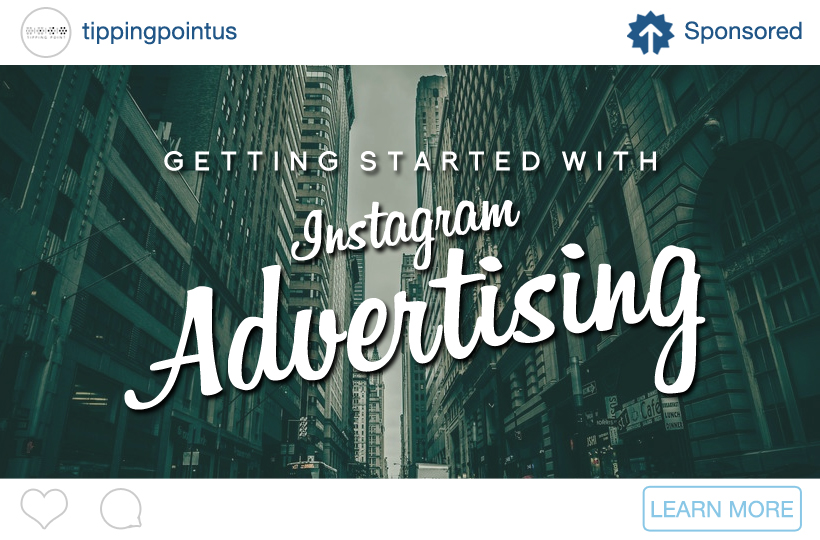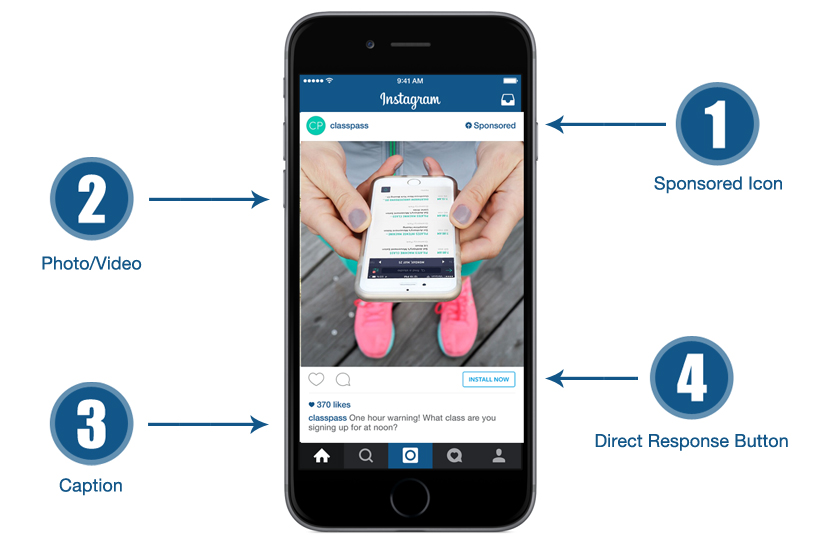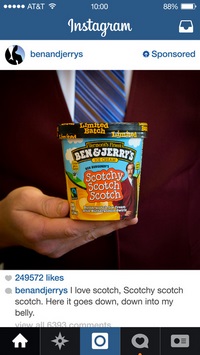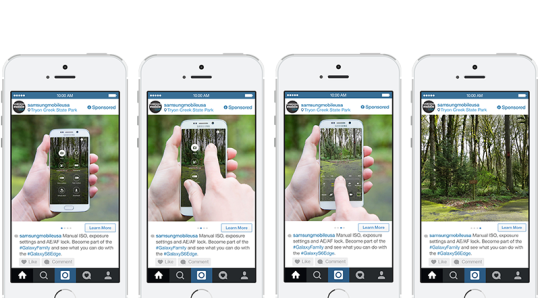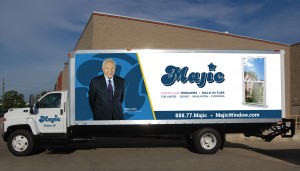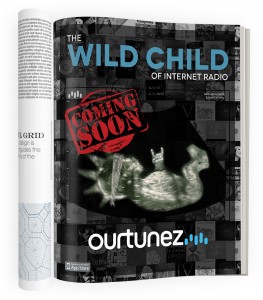Instagram has undergone some exciting changes in the past few months. From upgraded direct messaging to landscape and portrait picture support, our favorite social media platform is better than ever before. However, the most exciting news has been the announcement that Instagram is slowly opening up its platform for all advertisers. Until recently, Instagram advertising was only available to bigger brands that could afford to drop a minimum of $50,000 in advertising spend. Even then you had to know somebody who knows somebody and so on, but that frustrating publishing process is coming to an end. The visual social network confirmed it is slowly rolling out a self-serve style ad-buying platform similar to that of its big brother, Facebook. While there hasn’t been confirmation of an exact global release date, the service is scheduled to be released soon within the early fall timeframe.
This is incredibly exciting news as all businesses, large and small, can finally tap into the Instagram user base which has grown to over 300 million active users. Might we also add that those 300+ million users are far more engaged and receptive of your brand messages than users on Facebook. In fact, 68% of those active users engaging with brands on a regular basis. With such a high engagement rate, serving Instagram users highly targeted ads only makes sense. While you may not be able to run an Instagram ad campaign just yet, you can start crafting one to have ready. Let’s take a look at the components of an Instagram ad:
The Instagram Ad
1) Sponsored Icon
If you have an Instagram account then you’ve more than likely already encountered a few ads within your feed. Ads are marked with a blue ‘Sponsored’ icon in the top right corner of the post.
2) Photo/Video
Being that Instagram is a visual platform, your image or video will drive your ad. Instagram differs from other social media platforms in that it has the power to elicits an emotional response. In creating your ads you can develop an emotional response from your audience by crafting images and videos that are concept driven. What do you want your message to be? What do you want people to think and feel when they see your ad? You can enhance your concept by utilizing these 3 techniques:
- Tell a Story: Take a series of images that tell a story about your brand and share them over a period of time.
- Apply a Specific Visual Treatment: Make use of different image filters to create a powerful visual mood. You could even apply a series of different filters to illustrate a change in mood over time.
- Develop a Theme: Create a series of unique images that all share a common theme. For instance, you could show a single object in a series of different settings.
Make sure your images are well crafted and free of pixelation or bad lighting. It’s best practice to keep your images simple, creating a strong focal point for a brand element that’s easily recognizable to your audience. The Ben and Jerry’s ad below serves as a perfect example. The tub of Ben and Jerry’s ice cream is kept front and center as the focal point.
Like Facebook ads, Instagram photos must abide by the 20% text rule. You can check to see what percentage of your ad is text using Facebook’s grid tool. Ads can be a single photo or a carousel of several photos. Samsung was one of the first companies to test out Instagram’s carousel ad format. Each photo served as a different step in a mini photography tutorial that highlighted the Galaxy S 6’s new camera features.
Advertisers can also promote their products and services through video ads. Videos can be no longer than 15 seconds in length so it’s up to you to figure out how you’ll get your message across in such a short span of time. A time-lapse or teaser is a great way to work within Instagram’s time restrictions.
3) Caption
The caption you use for your ad will appear below your image and is limited to 175 characters. This is similar to Facebook’s ads which are capped at 135 characters so transitioning your copywriting skills from one platform to the other shouldn’t be very hard. As best practice, you should not include a URL in your caption as the URL will not be clickable in the ad text field.
4) Direct Response Buttons
Gone are the days of pasting un-clickable links into the captions of your Instagram pictures. With direct response buttons, brands can now prompt users to take a specific action after seeing an ad. The buttons appear to the right of the post under the image. Advertiser can choose from four different call-to-action buttons including, “Install Now,” “Sign-Up,” “Shop Now,” and “Learn More.” Each button opens up a browser that will take users to a specific webpage or location within a mobile app store.
Ad Targeting
Instagram advertisers have previously been able to target audiences by age, location, and gender. But now, Instagram has partnered with parent company Facebook to reach users based on their interests and connections across both social media networks. Instagram also supports the Custom Audiences tool, which allows advertisers the opportunity to upload their own information about their consumers which can then be combined with Facebook’s targeting options to reach the ideal audience.
Ad Measurement
Targeting isn’t the only feature Instagram is pulling from Facebook’s proven capabilities. Analytics and measurement is also getting the Facebook treatment. With the new direct response buttons, brands can track who is clicking through those buttons and who goes on to download an app or make a purchase after engaging with an Instagram ad.
Instagram Isn’t Facebook
It’s important to keep in mind that Facebook and Instagram aren’t the same, even though Instagram advertising mirrors Facebook advertising in a lot of aspects. First off, Instagram’s user base is much younger than Facebook’s, and consists primarily of higher-income US teens. Additionally, people use each platform for different reasons. Instagram is entirely focused on photos and videos, whereas Facebook provides options to post additional content like articles. The way users interact and engage with posts will differ across each platform.
What Are You Waiting For?
If your business doesn’t already have a presence on Instagram now is as good a time as ever to create one. While Facebook still has its benefits, Instagram is quickly rising to become the premiere social media platform for businesses. Since 2012 Facebook’s organic reach has declined from 12% to 4%. On the other hand, Instagram’s reach has doubled up from 13% to 26%. Moreover, Instagram’s engagement rate blows Facebook’s brand engagement out of the water. While 32% of Facebook users shy away from brands, 68% of Instagram users interact with brands on a regular basis. Long story short, Instagram could be more beneficial for your brand than Facebook and you should get in while you still can. While 93% of all brands are on Facebook, only 36% of them are active on Instagram. If you want to maximize your brand reach and produce additional sales you’ll want to get on Instagram, establish your presence, and start producing ads before your competitors do. For more information on how to create ads for Instagram you can visit Facebook’s Help Page, which details how to create Instagram ads using Facebook’s Power Editor. Instagram also offers a lot of great information, including business case studies and ad launch results.
Not sure how to get started on Instagram? It can be tough, especially for companies with products and services that lack a visual appeal. However, it just so happens that we’ve written a comprehensive Instagram E-book that will teach you how to craft engaging content for your target market, growth hack your brand, generate leads, and produce sales.
Download Our E-Book
Get started today on your path to Instagram success. Download our free E-book and learn how to turn Instagram into a lead generating machine.
